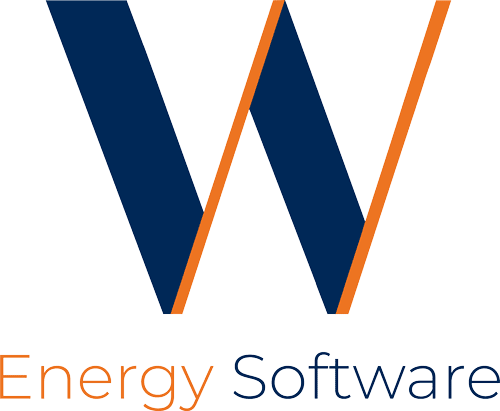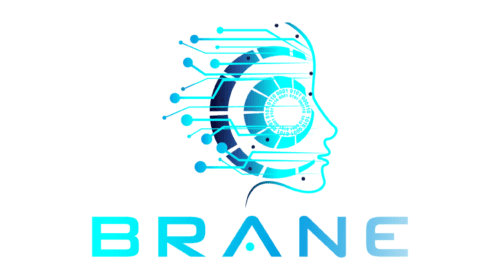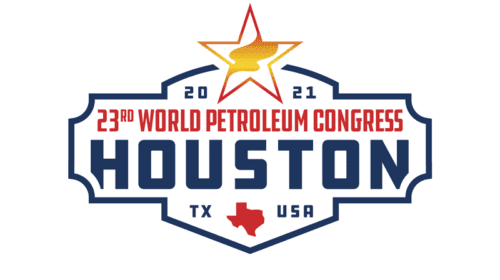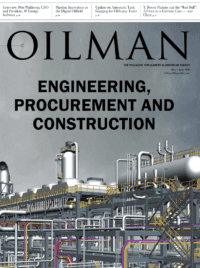Eric Eissler: We have just entered a new downturn for the oil and gas industry as the COVID-19 pandemic holds hydrocarbon demand at bay. What we have seen from the 2014 downturn is that many companies in the oil and gas industry have adopted more technology. Could you elaborate on why producers would want to use your solutions for their business?
 Pete Waldroop: Our industry is an interesting one. In some ways, we have lagged behind other industries from a technology perspective. But we have innovated when we needed to do so. Yes, the U.S. oil and gas industry is in a tough place, but the current situation only serves as another catalyst for innovation. We must continue to find ways to reduce costs and utilize technology to make pulling a barrel of oil from the ground less expensive. And as we have seen time and time again, those who side with innovation will weather downturns and thrive through the inevitable resurgence.
Pete Waldroop: Our industry is an interesting one. In some ways, we have lagged behind other industries from a technology perspective. But we have innovated when we needed to do so. Yes, the U.S. oil and gas industry is in a tough place, but the current situation only serves as another catalyst for innovation. We must continue to find ways to reduce costs and utilize technology to make pulling a barrel of oil from the ground less expensive. And as we have seen time and time again, those who side with innovation will weather downturns and thrive through the inevitable resurgence.
W Energy Software is doubling down on innovation, working with our customers to see how we can help, and driving forward with new partnerships to tap into new technologies and drive new operational and cost efficiencies. Our software products are what oil and gas companies rely on to run their entire business, from land and production operations to gathering, processing, and transportation. Our software automates many back-office workflows and reduces general and administrative (G&A) costs, which can drop more revenue into a customer’s bottom line at a time when they really need that cash flow.
EE: What benefits does your software offer over traditional solutions and methods in place? What kind of background does someone need to operate this software? Do they need to have a specific background to use it?
PW: W Energy Software covers a lot of ground when it comes to the types of users we have. We have solutions that are used by land professionals, upstream accountants, field staff, engineers, energy traders and marketers, liquids and gas schedulers, and midstream accountants – really anyone involved in moving or tracking hydrocarbons from the wellhead to points of sale and city gates. What’s really valuable is that our customers can do all of that with a lean team and scale up without adding overhead, empowering the back office with our cloud-based technology and allowing companies to quickly scale up with the resources they already have. One of our clients recently did an acquisition valued at three quarters of a billion dollars with no additional headcount needed by using our software.
In terms of background, our software is extremely intuitive because our development folds in modern user experience best practices with a deep understanding of each segment of the energy value chain. Anyone can use it regardless of whether they have a formal education. In fact, one of our customers recently wanted to get one of their clerical staff involved in a midstream accounting workflow and despite having no college degree she was able to quickly grasp the basics within three weeks and now has a career in that field.
EE: Which kinds of companies make up a majority of your user base and are any outside of North America?
PW: We launched W Energy Software with a solid focus on midstream companies but since then, we’ve been executing our product roadmap and have expanded into upstream. Right now, we are 100% focused on serving North America, but I can see us moving into new markets in the Americas and Europe.
EE: From the website, it appears that you offer clients more support and training than other companies. Would you say that ongoing support and training are an advantage that you offer over the competition?
PW: W Energy Software has a very unique philosophy in that we believe first in taking care of our staff and customers. If you focus on doing right by the client every day without compromise, success follows – and it has. We have an amazing support model that really puts customer success front and center. In addition to partnering with each and every customer through implementation and ongoing support, we have a standing policy that clients are always welcome to visit our offices for free training with no limit.
But we’ve found that the best way to continuously support customers is to understand how well we are actually serving them. That’s where the Net Promoter Score is very beneficial, which is a widely used method of measuring customer satisfaction with a one question survey: Would you recommend W Energy Software? The scale is from negative 100 to positive 100 and we’ve recently scored a 47. This is incredible and we’re not too far behind companies like Apple. Our market research shows though that other energy software vendors rank consistently around negative 30.
EE: Besides accounting, could you take a deeper dive into the other software solutions you offer for the oil and gas industry?
PW: About ten years ago, W Energy Software created our first product for midstream, specifically for gas processing and accounting. But we had a roadmap for where everything was going to go with a vision for replacing all of the scattered, poorly integrated types of software oil and gas companies rely on with one, cloud-based platform. In other words, a place where land, production operations, upstream, and midstream workflows can live together, and where energy professionals can collaborate around a common dataset, vastly improving data transparency and processing speeds.
A couple of years ago we successfully implemented our first two upstream enterprise resource planning (ERP) solutions and, leveraging that knowledge and learning curve, we built the second generation of our upstream ERP product. That led to us being asked to replace a legacy ERP implementation at WPX Energy, which really marked the tremendous takeoff we’ve seen ever since. Now they can do highly complex production and revenue allocations, disbursements to interest owners, and other complex processes in minutes compared to days.
And we are taking that model of building a product based on the expectations of modern users and applying it to all of our product development. For example, we recently worked with customers to create a land management product based on their wish lists at no cost to them. The result is our third-generation land solution that companies are rushing to adopt. Now we have product and growing market share for operational accounting, scheduling, crude transportation, and terminal management. But the overarching reasons W Energy Software’s products are so attractive is that they restore trust in the data and meet the expectations of today’s energy professionals who know what modern software should look and feel like. And how it should perform. No more waiting hours and hours or even longer for jobs to run. Today’s energy professionals just don’t have the time for that.
EE: What is your opinion/educated guess on where the oil and gas industry might go after the pandemic ends: a general point of view?
PW: We need to be more competitive on lifting costs, which is why at nearly $30 a barrel at West Texas Intermediate (WTI) most of our country is uneconomic to develop. Most of the wells we’ve been drilling are shale, so they decline fast, and we will have to keep drilling those to replace reserves when demand returns. Those wells need to be drilled much more cost-effectively. But there are things we can do to reduce operating costs as well, such as automating back office processes and eliminating expensive old school information technology and legacy applications with cloud-based solutions.
In terms of how the industry rebounds, it’s going to require a laser focus on free cash flow and oil in the $40 to $50 range.
EE: How do you anticipate the geopolitical climate between Saudi Arabia and Russia will play out and what influence will OPEC have on the overall oil and gas market in North America?
PW: What we need to do is minimize the influence from price wars and market manipulation by cutting our reliance on OPEC oil, relying on our own means and local markets to meet US demand, and start tracking at the WTI benchmark price instead of Brent.
EE: Your company recently changed names and rebranded. What was the reason behind that decision?
PW: We were previously known as Waterfield Energy, but over the years our staff and customers began using W Energy as an informal name. So, in 2019 when the company had its 10th business anniversary, we decided to rebrand with a new name that most of us already used and at the same time we wanted to emphasize our focus on energy and software and “W Energy Software” clearly states what we do. At the same time, I like to think of deemphasizing all that clever marketing and branding companies tend to use and that puts the focus squarely on our customer’s brand, which is truly what we do best.
EE: With the nosedive in oil prices, do you think we will see an increase in mergers and acquisitions activity in the oil and gas technology space, operator bankruptcies, and overall financial distress in the upstream market?
PW: No doubt it’s going to be rough, especially for operating companies. There’s going to be some inevitable consolidation and companies are going to have to really focus on maintaining positive cash flow and not leveraging their business with large drilling projects.
I’m optimistic for our industry. With our tenacity and grit, we will weather the current downturn. It’s going to take innovation, but it’s also going to require all of us to pull together and tap into mutual strengths. Just as oil prices began collapsing in March, W Energy Software was in the midst of launching our partner ecosystem. That seemed timely as that’s what the industry really needs at the moment: a collective pool of expertise focused on innovation and driving new cost efficiencies. And this is a time when we are continuing to see our market share grow as companies seek those cost savings, look for ways to reduce G&A, and drive operational efficiencies. In fact, we just announced our latest plant accounting software customer, which is the 18th replacement of a legacy solution, combined with nearly 50 other greenfield wins in the same space.
It’s all about finding operational and cost efficiency. For us, that means investing even more in our technology and supporting our customers through downturns and helping them be poised for growth.
Headquartered in Tulsa, Oklahoma, W Energy Software (formerly Waterfield Energy) offers the oil and gas industry’s only unified ERP solution built for the cloud that is relied on by more than 100 upstream and midstream companies to accelerate business performance, improve operational efficiency, and drive down costs. W Energy Software combines precision-built software in one extendable cloud-based workspace with an intimate understanding of the oil and gas business to deliver solutions that offer flexibility, affordability, and continuous upgrades. Unlike other ERP software that loosely ties together a mix of legacy solutions and fragmented technologies, W Energy Software designed a unified upstream and midstream ERP platform to seamlessly track oil, gas, and NGL from the wellhead through transportation and marketing, eliminating data silos as well as the burden and costs of maintaining multiple systems. With W Energy Software, oil and gas companies stay lean and agile with the tools they need to adapt to market changes and meet evolving customer needs head on, all while gaining the confidence that their business is running on the latest technology. For more information, please visit www.wenergysoftware.com.
Eissler, former editor-in- chief of Oil & Gas Engineering magazine, previously worked as an editor for Dubai-based The Oil & Gas Year Magazine.













